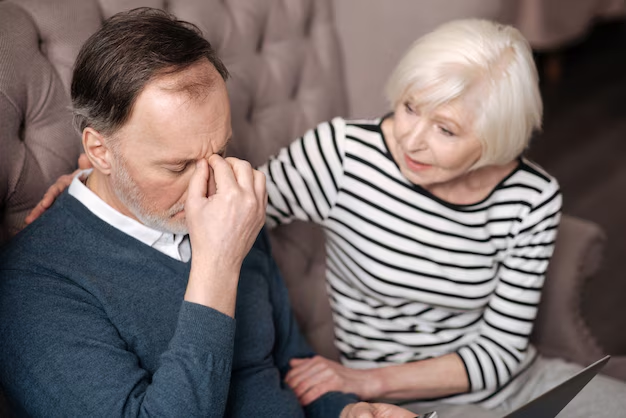Understanding the Progression: Recognizing Signs that Parkinson's Disease is Worsening
Parkinson's disease is a complex and progressive neurological disorder that impacts millions worldwide. For those living with the disease, understanding its progression is crucial for managing symptoms effectively. Recognizing the signs that Parkinson's is getting worse can be both challenging and vital, helping patients, caregivers, and healthcare providers adjust their approach to treatment and daily living. Here’s a comprehensive look at the signs indicating that Parkinson's is advancing and what they could mean for those affected.
Understanding Parkinson’s Progression
Parkinson's disease progresses at varying rates for different individuals. No two People with Parkinson's (PWPs) experience the disease in the same way, making personalized care essential. Generally, Parkinson’s progression is categorized into stages, ranging from mild symptoms in the early stages to more severe symptoms as the disease advances.
The Importance of Early Recognition
Identifying signs of progression early can significantly impact the quality of life. Early recognition allows for timely interventions that can manage symptoms more effectively, slowing down the functional decline and maintaining independence for as long as possible.
Early Signs of Worsening Parkinson's Disease
While initial symptoms might be mild, specific changes can signify that Parkinson's is progressing. Here are some key indicators:
Increased Motor Symptoms
Motor symptoms are at the core of Parkinson's disease, and an increase or change in these symptoms often indicates progression.
- Tremors: Tremors may become more pronounced or affect both sides of the body.
- Bradykinesia: An increase in slowness of movement or difficulties with everyday tasks can indicate worsening.
- Rigidity: Stiffness in the limbs or trunk may intensify, affecting mobility and posture.
- Postural Instability: Difficulty in balancing or frequent falls can be more common.
Non-Motor Symptoms
Non-motor symptoms often precede motor issues and play a significant role in the progression of Parkinson’s.
- Cognitive Changes: Memory problems, difficulty concentrating, or confusion might develop or worsen.
- Mood Disorders: Anxiety and depression are common and may become more pronounced.
- Sleep Disturbances: Including REM sleep behavior disorder, insomnia, or restless leg syndrome.
- Autonomic Dysfunctions: Issues like constipation, urinary problems, or orthostatic hypotension might appear or worsen.
Recognizing Changes in Daily Functionality
Monitoring daily activities and functionality can offer clues to the progression of Parkinson's.
- Difficulty with Daily Tasks: Things that were once easy, like dressing or using utensils, may become challenging.
- Voice Changes: Softening of the voice, slurred or unclear speech are indicative of progression.
- Walking Challenges: A shuffling gait or difficulty walking could mean the disease is advancing.
Psychological and Social Impacts
The psychological and social aspects of Parkinson’s should not be overlooked.
Emotional Well-being
As Parkinson’s worsens, emotional challenges may escalate. This could be manifested as depression, anxiety, or social withdrawal due to changes in self-esteem or personal identity.
Social Interaction
Social participation might decrease as symptoms like tremor, speech difficulties, or facial masking become more pronounced, reducing opportunities for interaction and engagement.
Supporting Someone as Parkinson’s Progresses
For caregivers and family members, understanding how to support someone with advancing Parkinson's is crucial.
Communication and Empathy
Effective communication, characterized by patience and empathy, can significantly aid someone coping with progressing Parkinson’s. Engage in open discussions about feelings and needs.
Adapting the Environment
Ensure that living spaces are safe and accommodate changing abilities. Using assistive devices, ensuring good lighting, and removing tripping hazards can make a significant difference.
Encouraging Activity
As Parkinson's progresses, staying active can help manage symptoms. Encourage regular, safe physical activities that are enjoyable and suitable to the current stage of Parkinson’s.
When to Seek Professional Advice
It is essential to maintain regular check-ins with healthcare providers to monitor Parkinson’s progression. Consult professionals if:
- Symptoms dramatically worsen: Any rapid changes in symptoms should be promptly discussed.
- New symptoms emerge: New motor or non-motor symptoms require professional evaluation.
- Medication side effects occur: Sometimes medications need adjustment, especially if there are side effects like dyskinesia (involuntary movements).
Developing a Comprehensive Care Plan
A personalized care plan, developed with healthcare professionals, can help manage Parkinson's more effectively.
Medication Management
Medications are the cornerstone of Parkinson’s treatment. Regular reviews ensure that medications are still effective and that dosages are appropriately adjusted.
Incorporating Therapies
Physical, occupational, and speech therapies can offer tremendous benefits. These therapies help improve functionality, communication, and quality of life.
Staying Informed
Keeping updated with Parkinson's research and treatments can empower patients and caregivers in managing the disease more effectively.
Final Insights
Managing Parkinson’s disease as it progresses requires vigilance, adaptability, and collaboration among patients, caregivers, and healthcare professionals. By recognizing the signs of worsening symptoms and understanding how to respond, both practically and emotionally, those affected by Parkinson’s can maintain a higher quality of life and better manage their journey with the disease.
Quick Summary for Managing Progression of Parkinson’s
- 👀 Watch for worsening symptoms: Increased tremors, bradykinesia, and cognitive changes.
- 🗣️ Encourage Open Communication: Be empathetic and patient.
- 🏡 Adapt the Living Environment: Ensure safety and accessibility.
- 🎯 Maintain Activity Levels: Promote suitable and enjoyable physical activity.
- 📆 Regular Professional Check-ins: Adjust medications and therapies as needed.
- 🔍 Stay Informed: Engage with latest Parkinson’s research and resources.
- 🤝 Support Networks: Utilize caregiver groups and community resources for additional support.
By implementing these strategies and maintaining awareness, those living with Parkinson’s can manage the progression more comprehensively and continue to thrive.

Related Articles
- Are There Environmental Causes Of Parkinsons
- Can Alcohol Cause Parkinson's
- Can Concussions Cause Parkinson's
- Can Females Get Parkinson Disease
- Can Head Trauma Cause Parkinson's
- Can Parkinson Disease Cause Dizziness
- Can Parkinson's Affect Eyesight
- Can Parkinson's Affect Memory
- Can Parkinson's Affect Speech
- Can Parkinson's Affect Vision